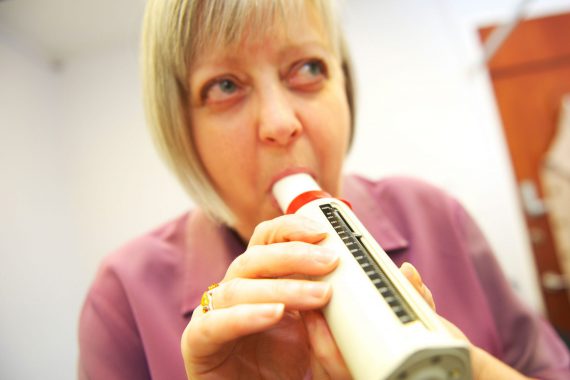BTS/SIGN draft guidelines on management of asthma
- GPs should use the initial structured clinical assessment to estimate the probability of asthma.
- For patients with a high probability, record ‘suspected asthma’ and start a carefully monitored trial of treatment (typically six weeks of inhaled corticosteroids). A good response to treatment, based on symptom questionnaire findings and/or lung function tests – either FEV1 or home serial PEF – is enough to confirm the diagnosis, but GPs must record the basis on which the diagnosis was made.
- Patients with an intermediate probability – either on initial assessment or after a failed trial of treatment – should undergo spirometry and, if positive, reversibility tests and/or a trial of therapy. If they have normal spirometry, they should undergo bronchial challenge tests and/or FeNO measurement.
- For patients in whom the probability of asthma is low, investigate possible alternative diagnoses and/or refer for further asthma tests
NICE: diagnosis and monitoring of asthma – interim guidance
- For all patients over five, GPs should perform objective tests (including spirometry and FeNO) at the time of presentation, or once acute symptoms have been controlled.
- Do not make a formal diagnosis of asthma until objective tests have been done.
- Offer a FeNO test if a diagnosis of asthma is being considered in anyone over 16, or in children over five if they have normal spirometry, or obstructive spirometry but negative bronchodilator reversibility












